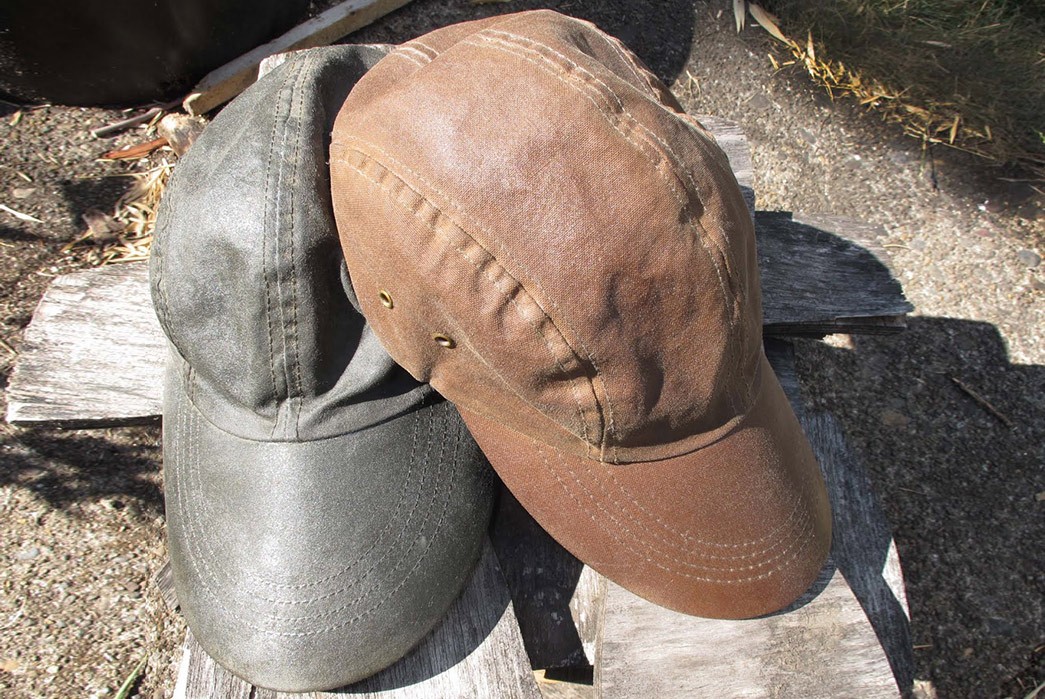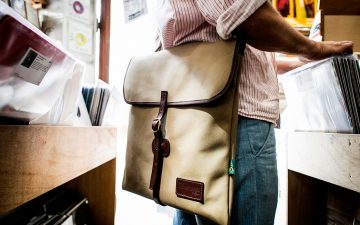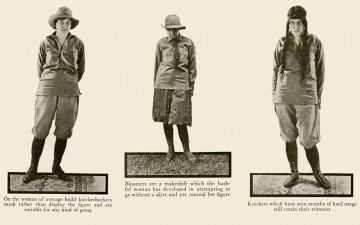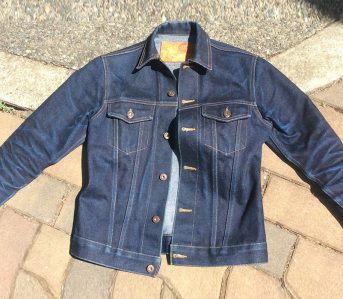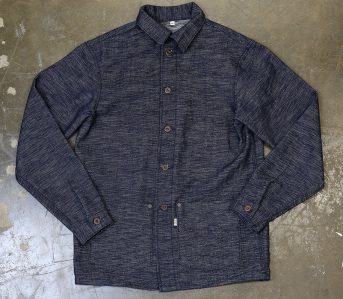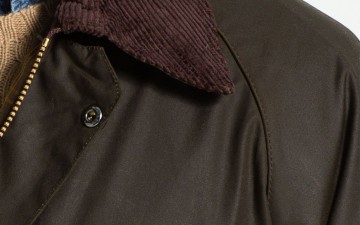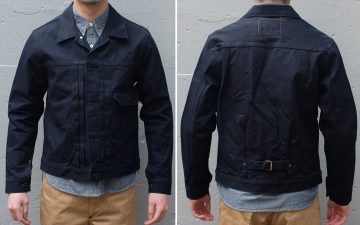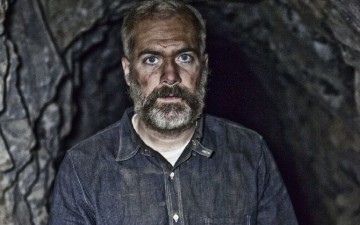Early September is the time to make the move from poplin to waxed cotton.
I always start with my cap. Around this time of year, I dust off my beloved collection of duckbills, primarily procured from Filson. I’m providing a courtesy link to their site but unless you are browsing through the Wayback Machine, don’t spend too much time searching for what’s on display below. Alas, Filson dropped their duckbills, including the iconic tin cloth model, in a recent modernization of their headwear line.
But why? While trail and trucker caps match the zeitgeist of the day, duckbills provide superior rain and sun protection and always elevate the style of any sporting ensemble (see Hemingway example below).
Let’s browse through this old Filson print catalog page to see what you are missing.
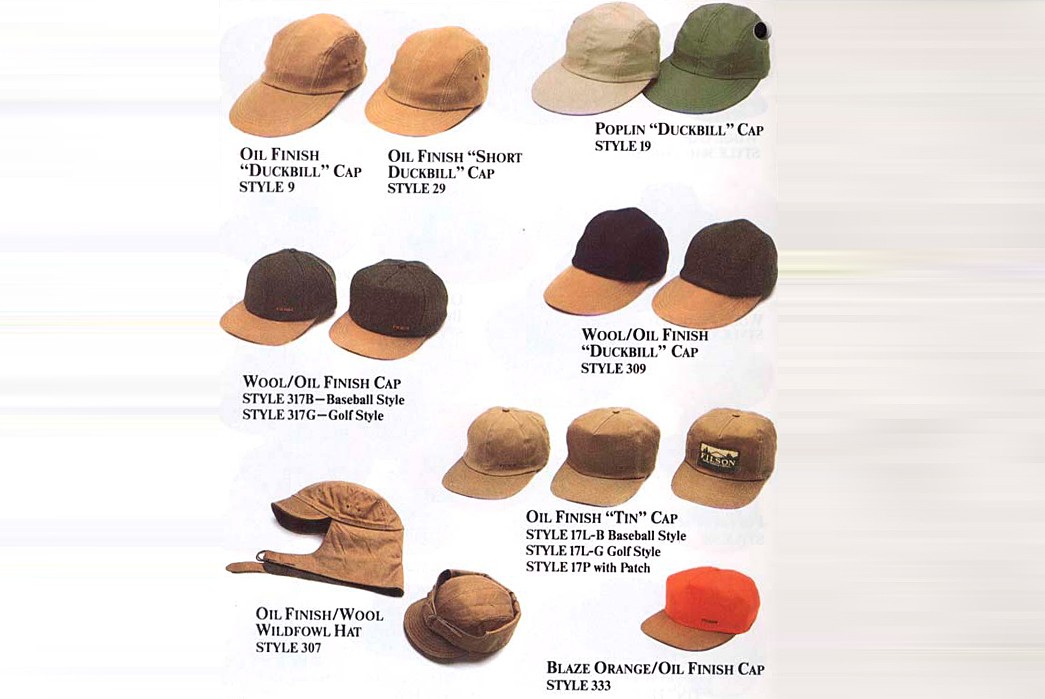
Duckbills due a revival. Filson catalog offerings from the 1980s.
A little over a decade ago, you could buy an original Filson duckbill in melton wool, tin cloth, shelter cloth, or cotton poplin. I have a collection of them that I rotate through the seasons: poplin for summer, tin cloth for fall, wool for winter, and shelter cloth cloth for spring. While they were originally designed for sporting purposes, the caps also work for cycling: the extended bill keeps the sun and rain out of your eyes while the low profile crown closely hugs the head (making it possible to tuck it in under a helmet).
Early History of the Duckbill
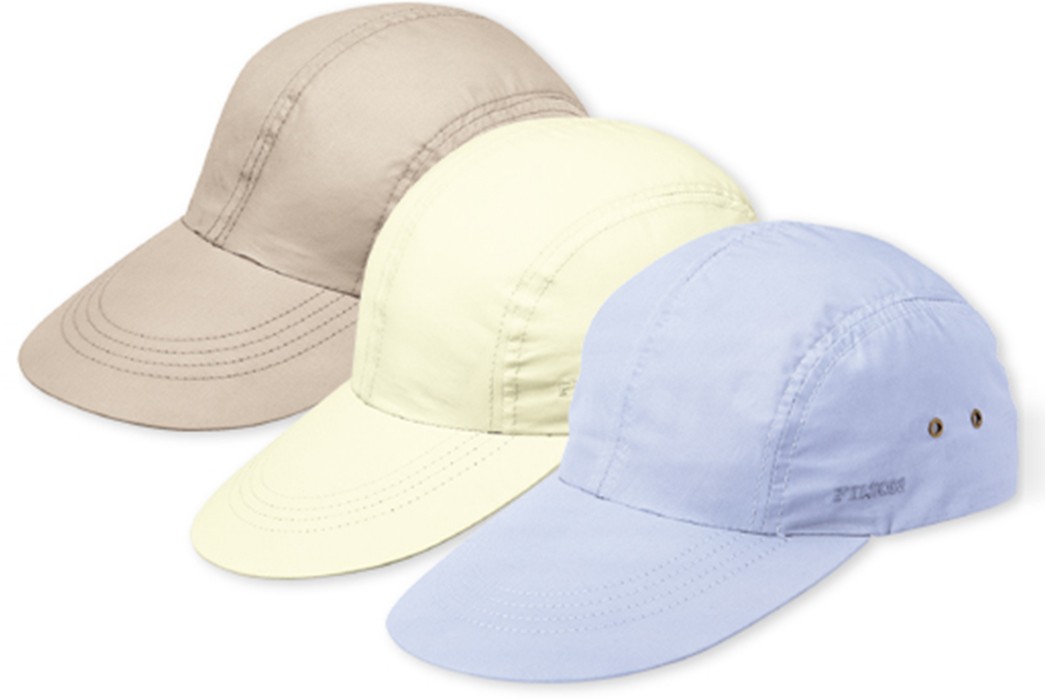
Shopping from the Waybackmachine: classic Filson duckbills in cotton “Feather Cloth” in the 2005 catalog.
Filson duckbills carry forward the profile of a historic cap style that was popular with sailors and fishermen in the early twentieth century. The genetic identifiers include a shaped, four panel crown, a 2-4 inch long bill with a green under-visor, cotton or leather headband, and venting via side grommets; the bill itself was variously made of stiffened cotton, leather, and later, plastic.
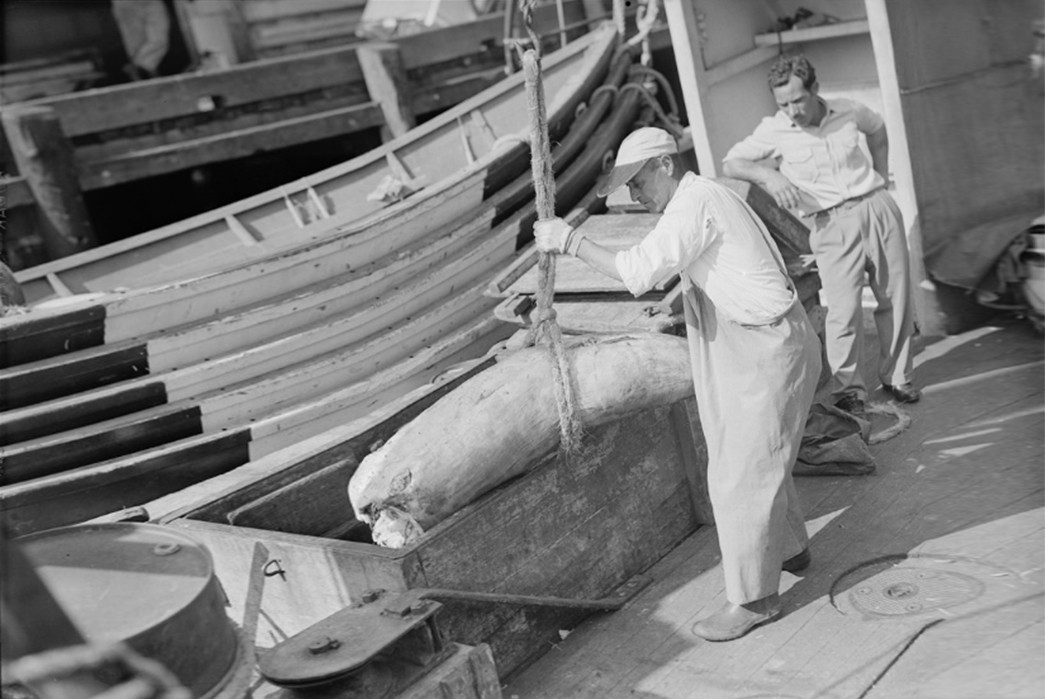
Fisherman sporting a leather billed cap in 1945.
While my own research into the deep history of the duckbill did not produce a pre-WWII list of vendors, I did receive a fascinating, speculative summary of the caps origins from military gear aficionado and head of cap brand Papa Nui, John Tesoriero:
“I believe [the duckbill] has roots right back to the early twentieth century, an invention of necessity by anyone that had to do serious outdoor work in the sun (Oystermen, fishermen, etc). There’s a few photos of ’20s Hemingway with a sizable brimmed cap that almost has a box top crown, which certainly predates the four panel, so that size visor was certainly around early.
“The war years saw a proliferation as basically the government took over all garment factories and, I believe, based a lot of their style ideas on existing American sportswear (which is why a lot of WWII gear is really practical for the outdoors). In the field and on campaign, it’s not much of a stretch to make the assumption that if you were stationed in the South Pacific, you’d get a rigger made version with more sun protection. By the ’50s, volume brims were quite normal with a fitted crown and then these were made signature by lots of manufacturers in the Eastern seaboard states where sailing, boating, and outdoor activities in the water were prolific.”
As Tesoriero notes, many of the military caps issued for soldiers in the South Pacific drew on the design cues of the original, oysterman duckbill. The B-1 Summer Flying Cap, which was issued by the Navy in cotton and gabardine, minimized glare during wartime flying, and the shaped, four panel crown, which lacked a button on top, fit neatly under headsets or leather helmets.
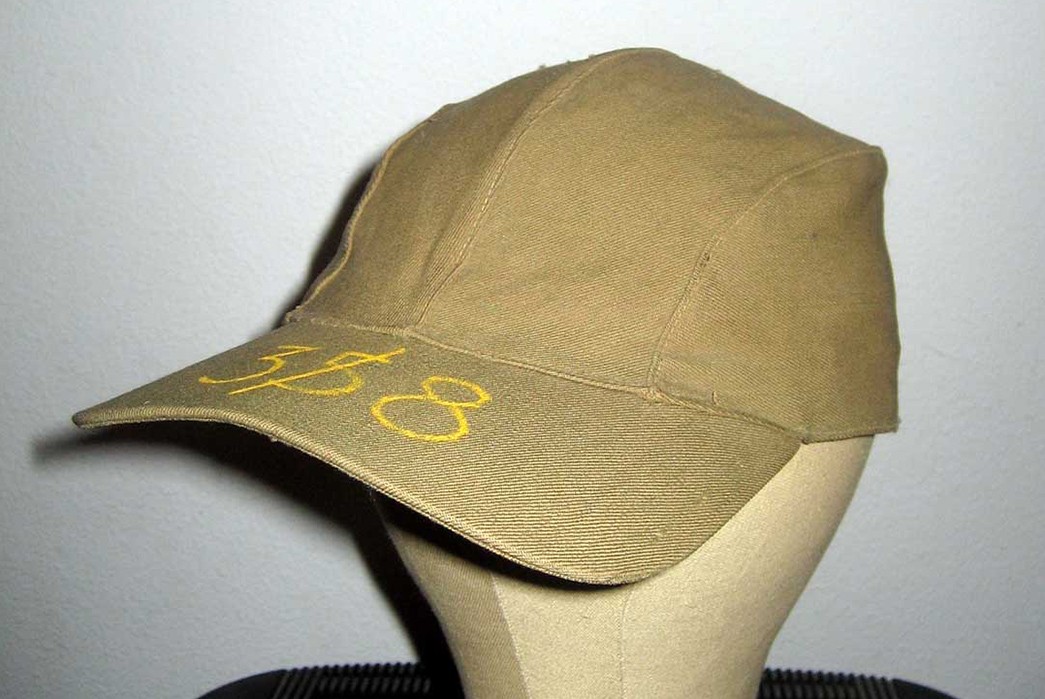
WWII era B1 flying summer cap with numbers painted on visor.
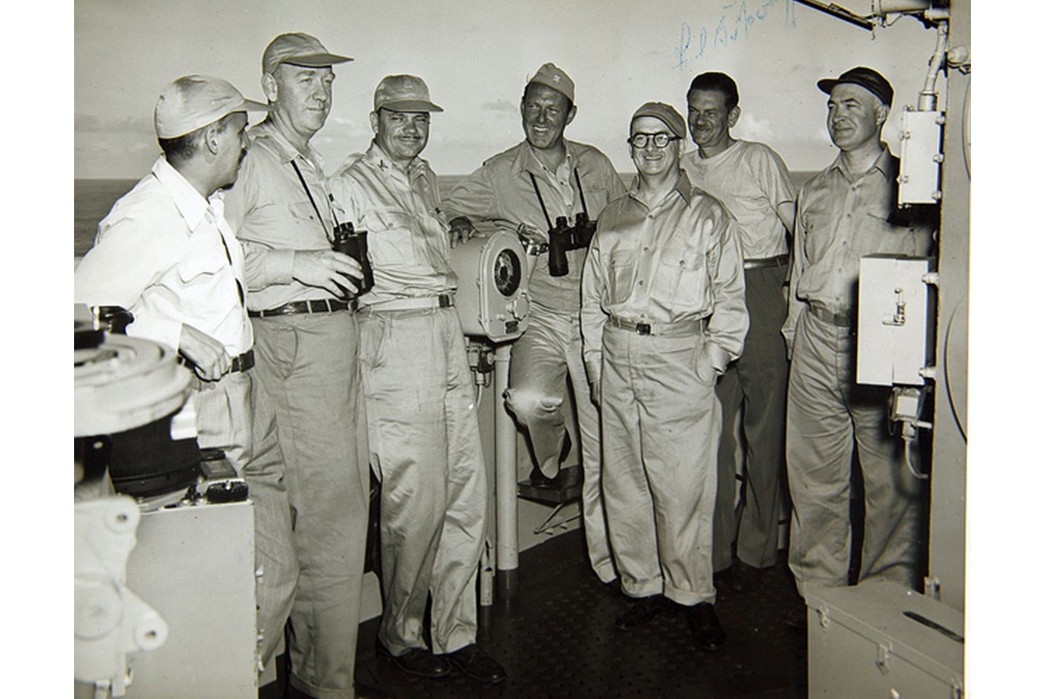
Longbill caps were popular with naval avaitors during WW2.
Post-War Hunting Gear
As is often the case with heritage garb, military issue caps morphed into post-war hunting gear. Post-war surplus stores offered sporting hats (along with jackets, mess kits, frame packs, and parkas) on the cheap. My own collection of duckbill photos come from the countless water-fowling catalogs, outdoor magazines, and vintage hunting photos from the 1950s and 1960s (the golden era of canvas duck hunting garb).
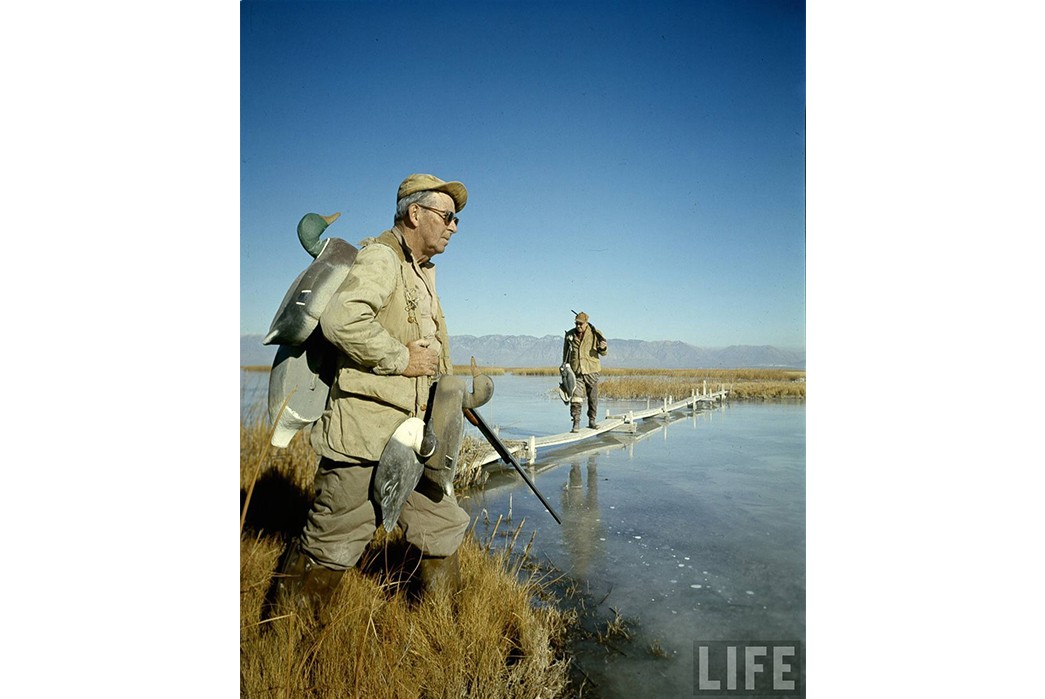
Duckblind style: a shorter, upturned duckbill completes the sporting look
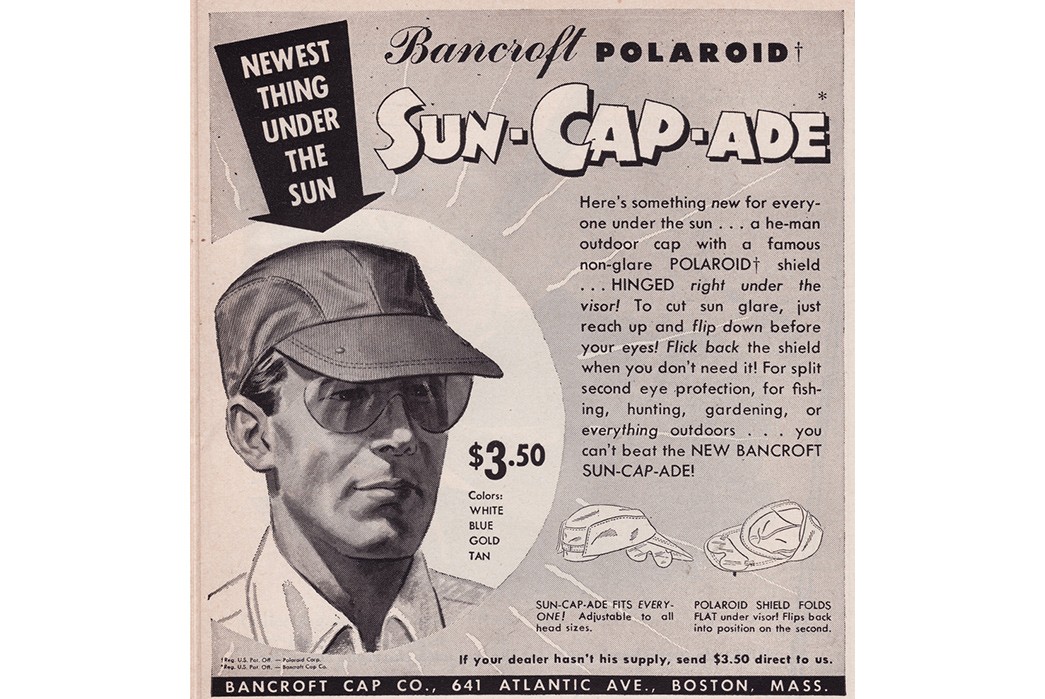
From an era when a billed cap could impart “he-man” status.
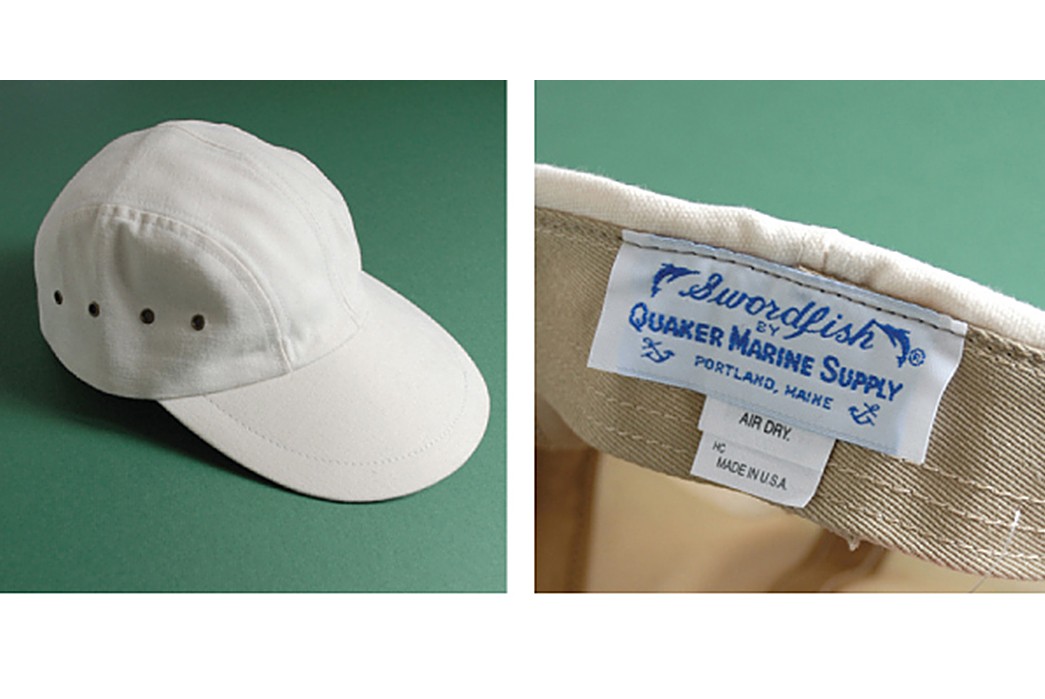
Here and gone. Quaker Marine Supply sold a stylish iteration of the longbill popular with sailors and outdoorsmen. Alas, the company has folded.
Celebrity Avatar, Ernest Hemingway (and David Mamet)
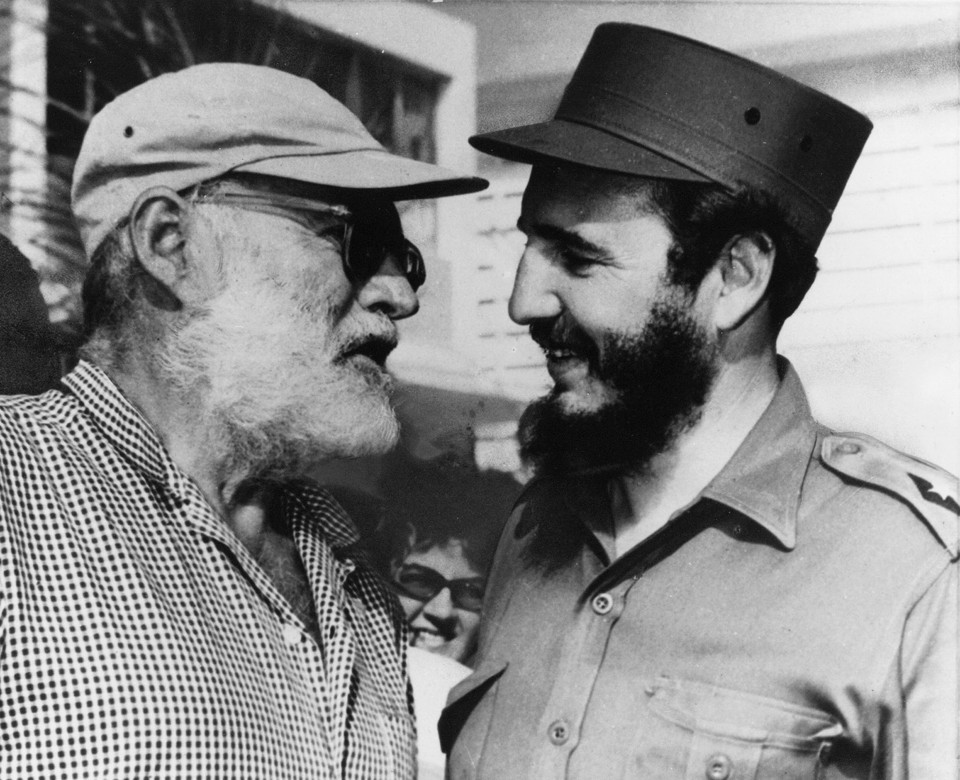
Hemmingway and Castro: cap to cap
If duckbills had an archetypal user, it would be Ernest Hemingway. Some of the most iconic snaps of Hemingway show him wearing variations of a classic duckbill while sport fishing in the Florida Keys (or even meeting Fidel Castro).
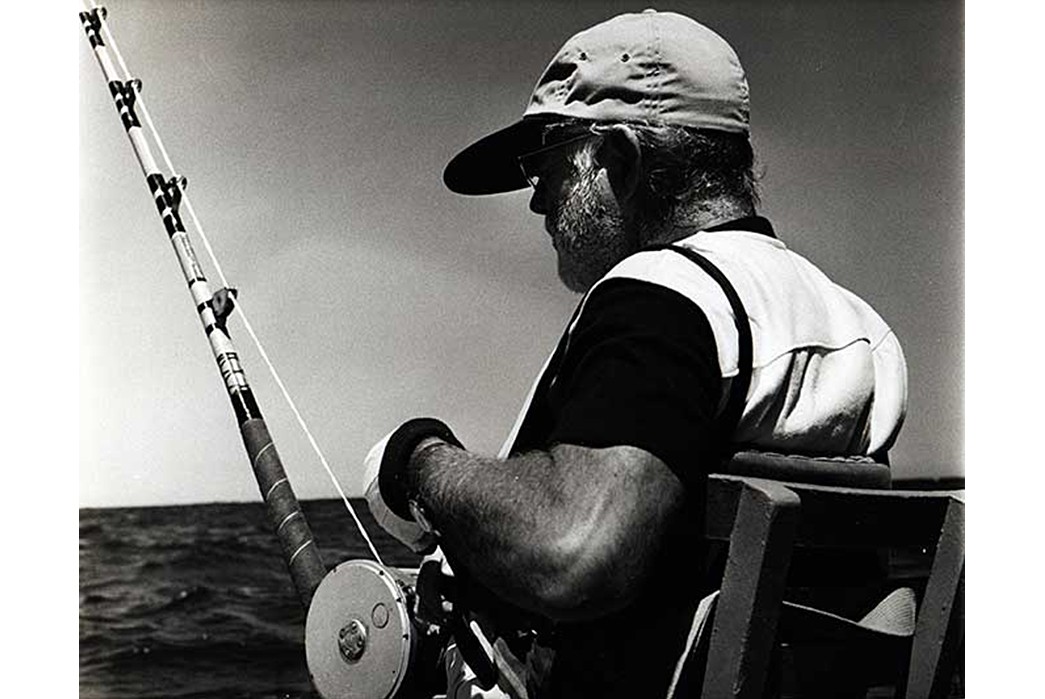
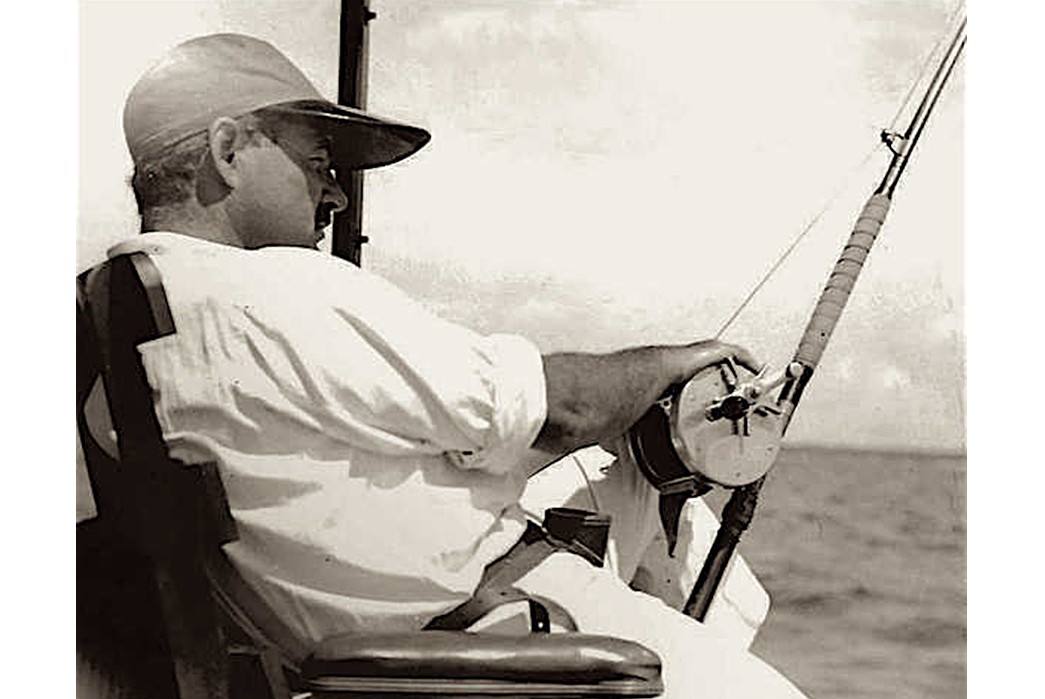
A latter day (albeit less visible) celebrity avatar is director David Mamet (whose movies belie a deep affection for heritage garb).
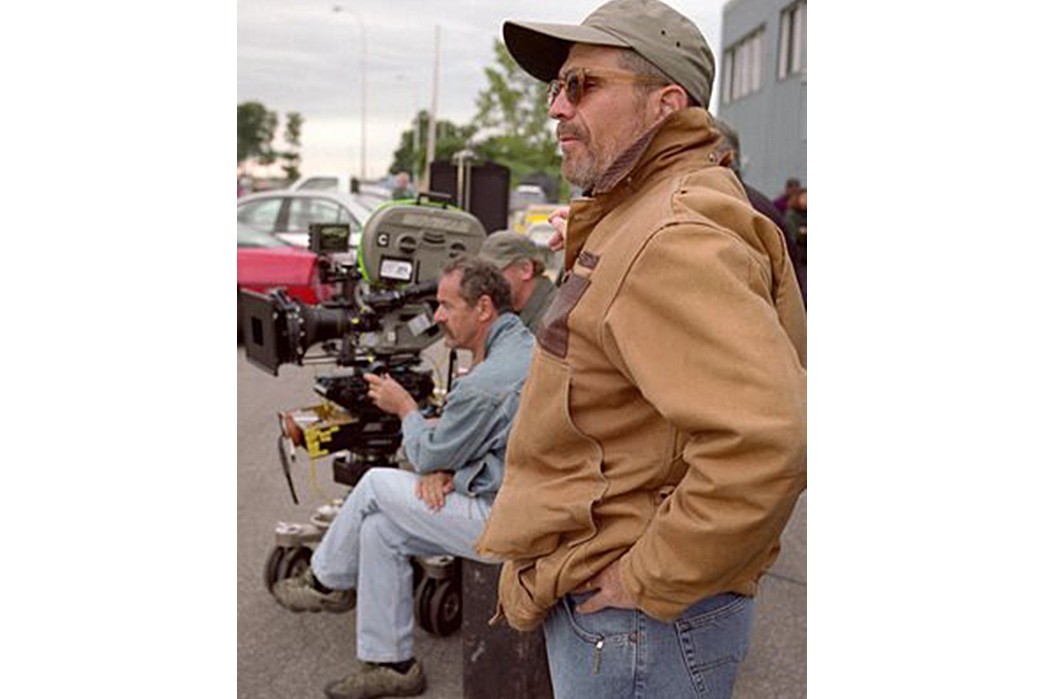
Mamet on set in a Quaker Marine cap.
Films like State and Main (2000), Heist (2001), and The Spanish Prisoner (1997) are overpopulated by characters sporting Filson, Barbour, and variations on poplin and waxed duckbills (see, for example, Steve Martin’s character defining cap in The Spanish Prisoner).
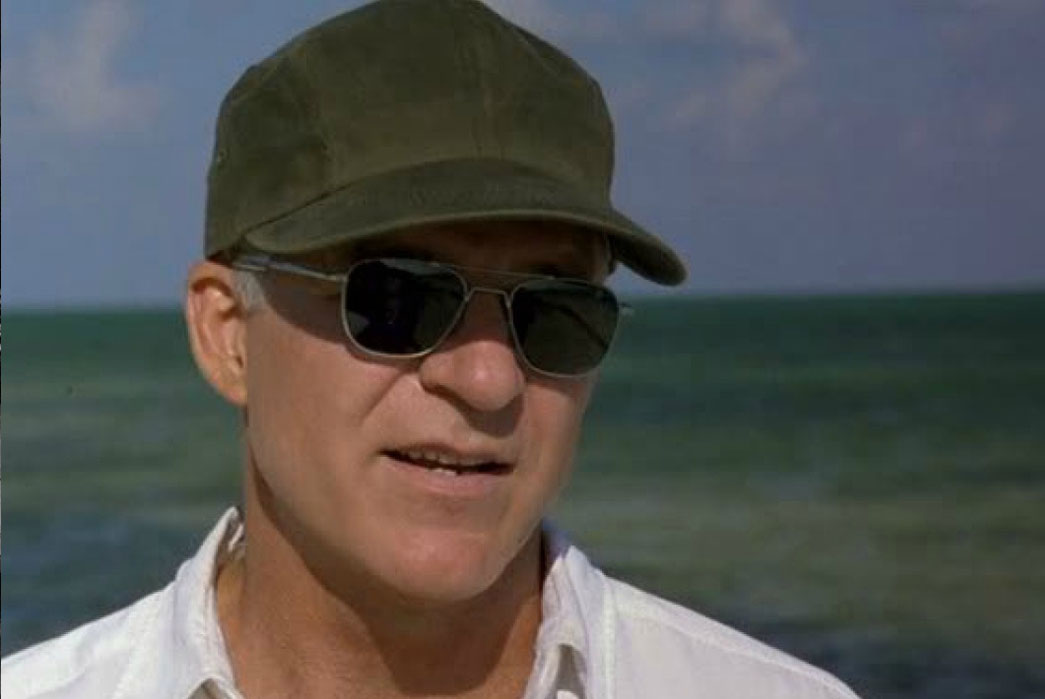
Shopping From eBay
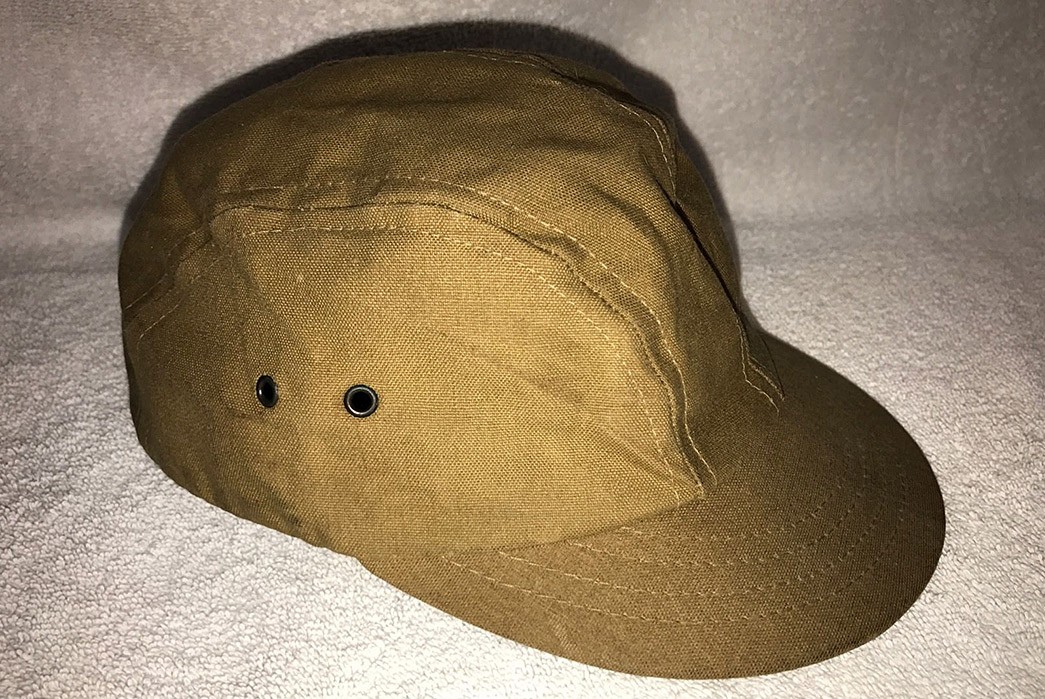
If you are in search of your own duckbill, I recommend giving up Google and just setting up some keyword searches on eBay. Quaker Marine and Filson duckbills appear with some frequency on auction. Etsy works but prices are high and inventory is low.
Size up if possible since tin cloth and canvas duck fabrics shrink over time (and there is no plastic snapback to provide wiggle room). I would also look for models with cotton sweatbands. While I love the formal elegance and traditionalism of leather sweatbands, they tend to crack, tear and buckle over time. And though I have been extolling the virtues of longbill caps, my all time fave Filson cap is in fact their shortbill variation.
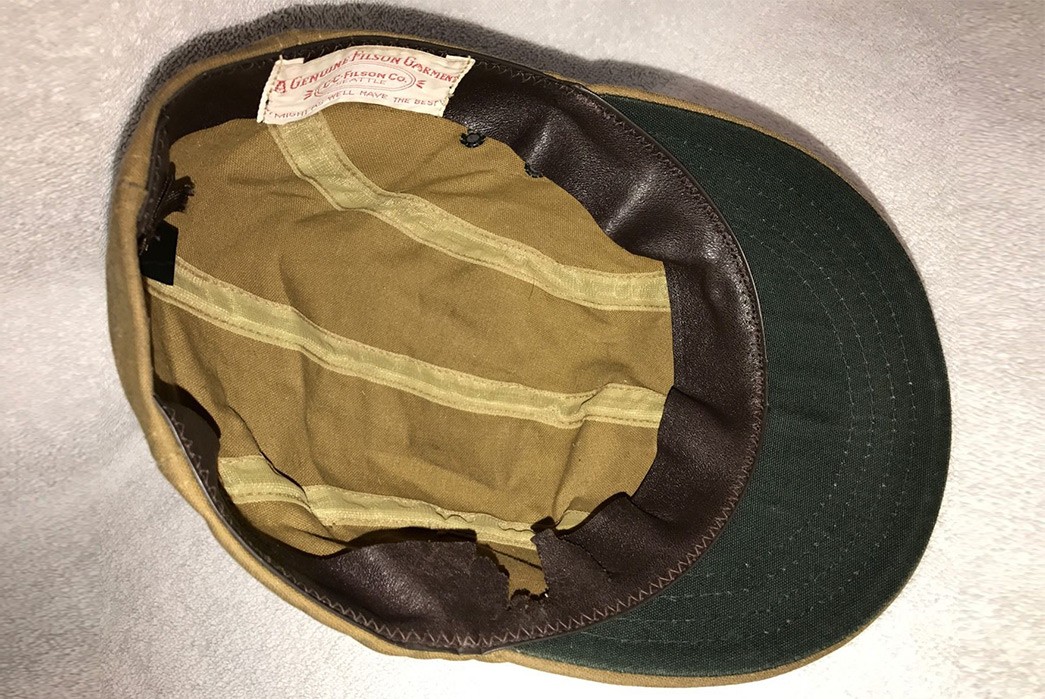
Finished seams, fitted sizing, and leather sweatband characterize the quality of this early generation of Filson duckbills.

